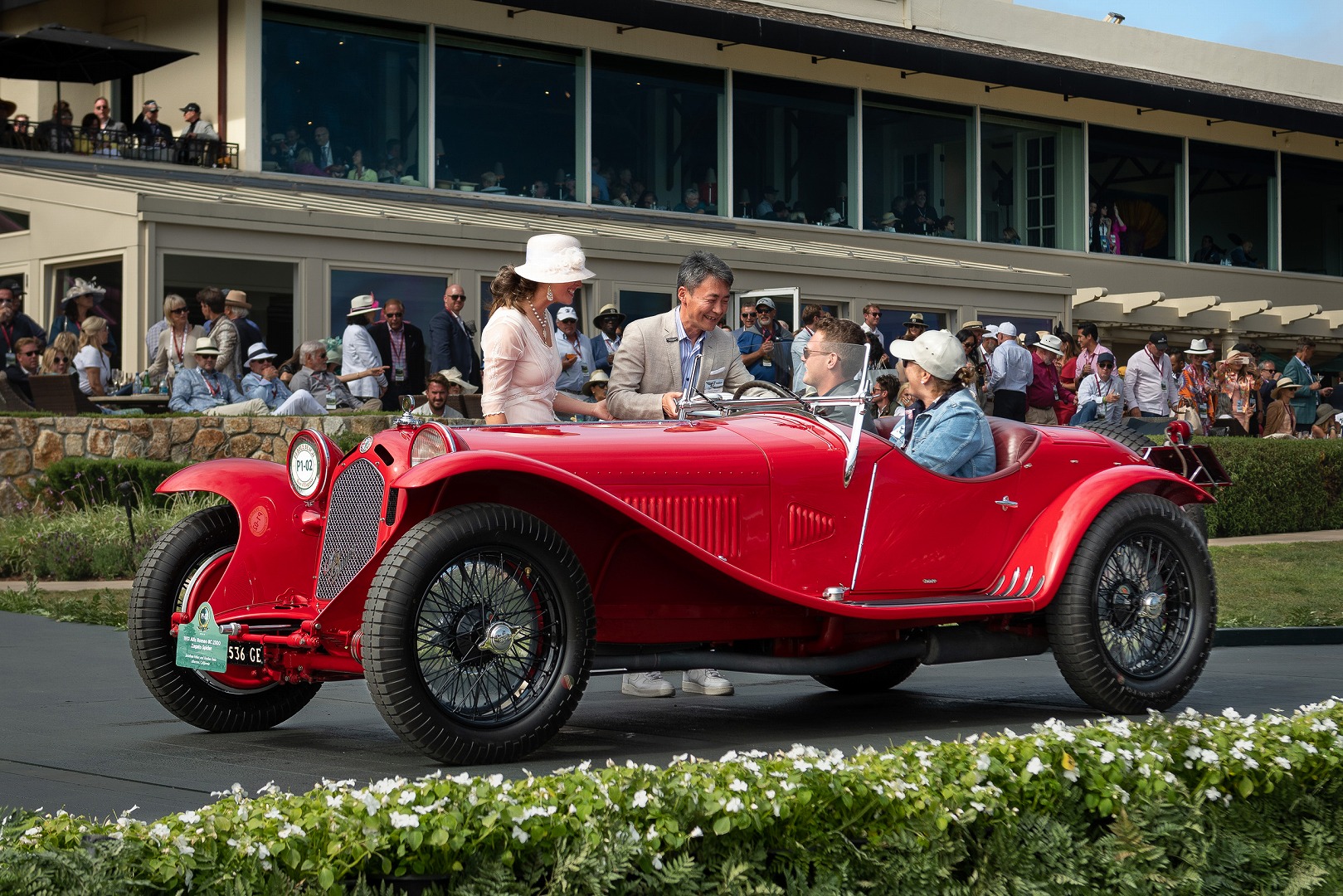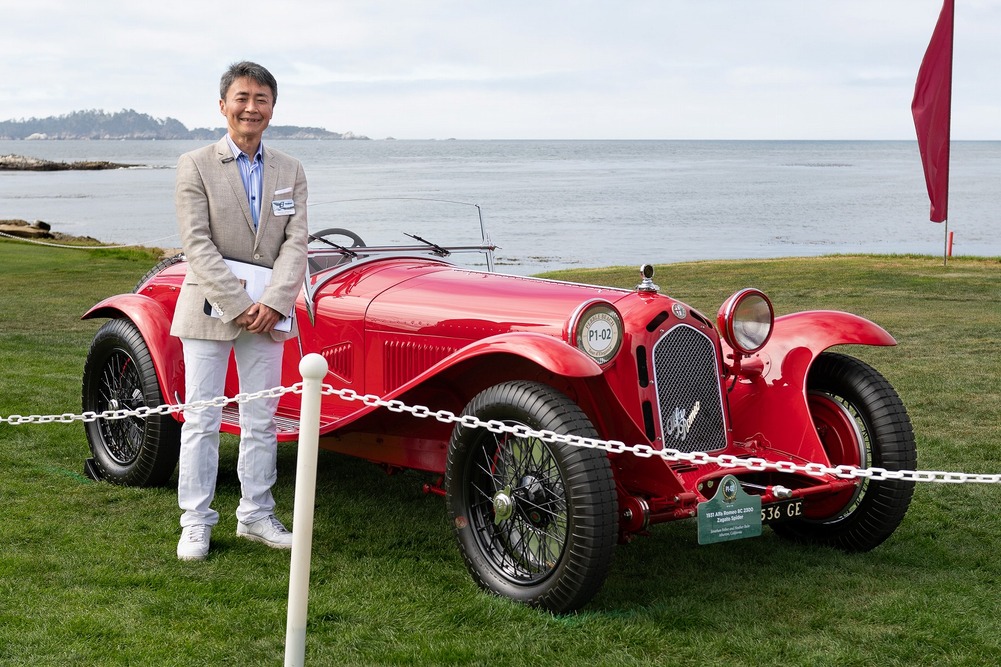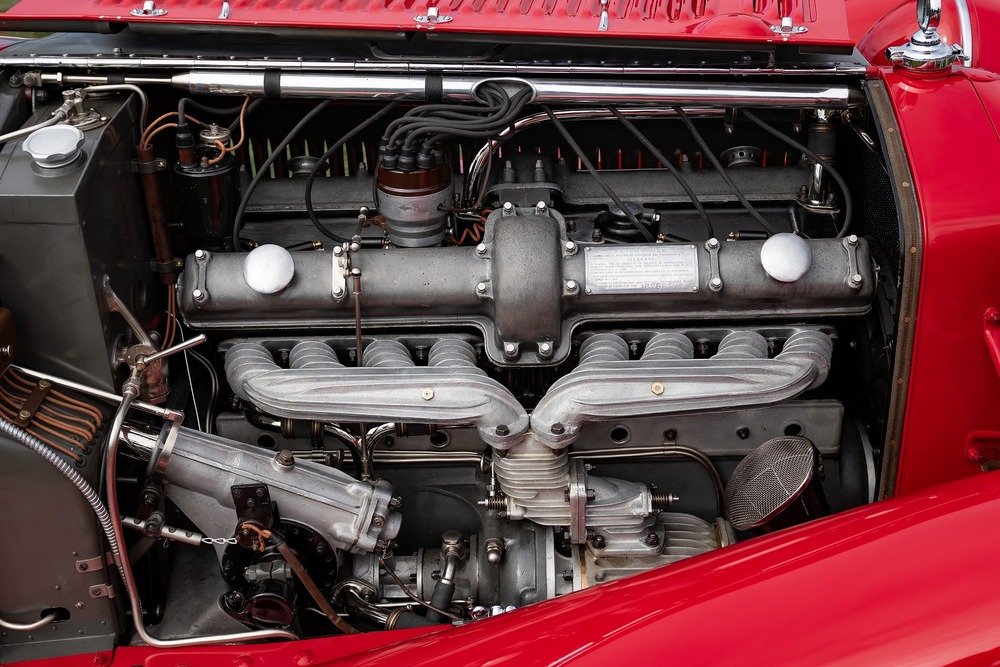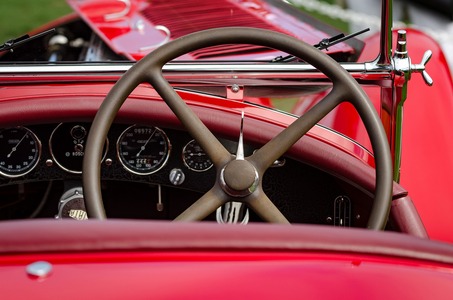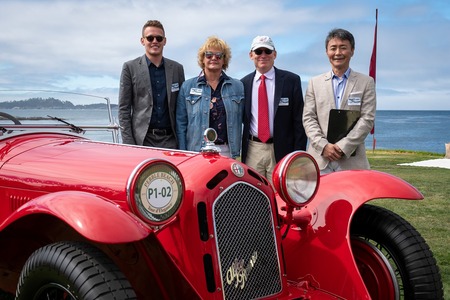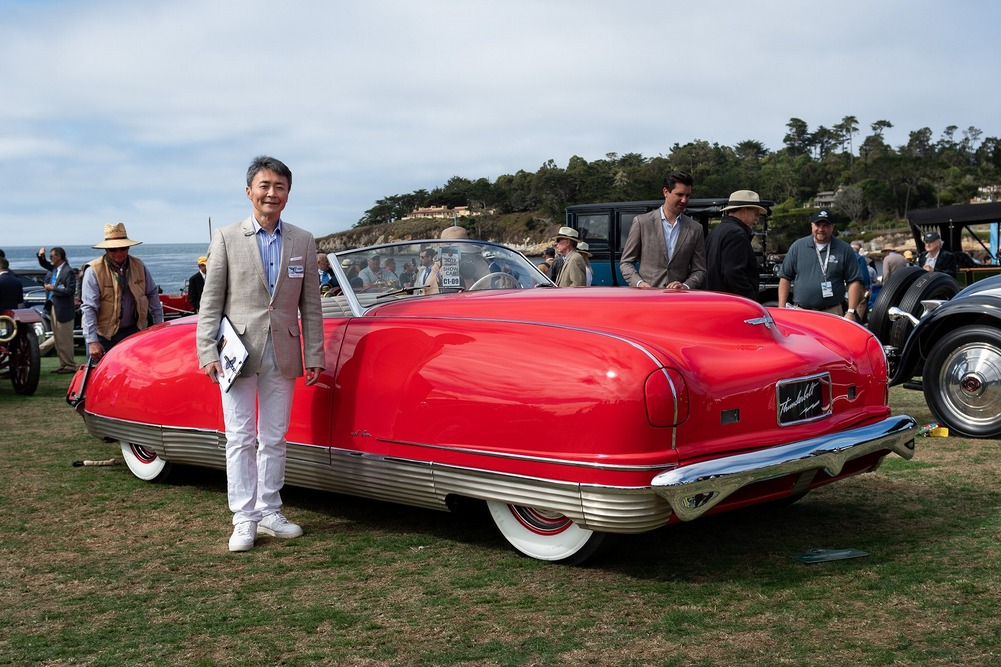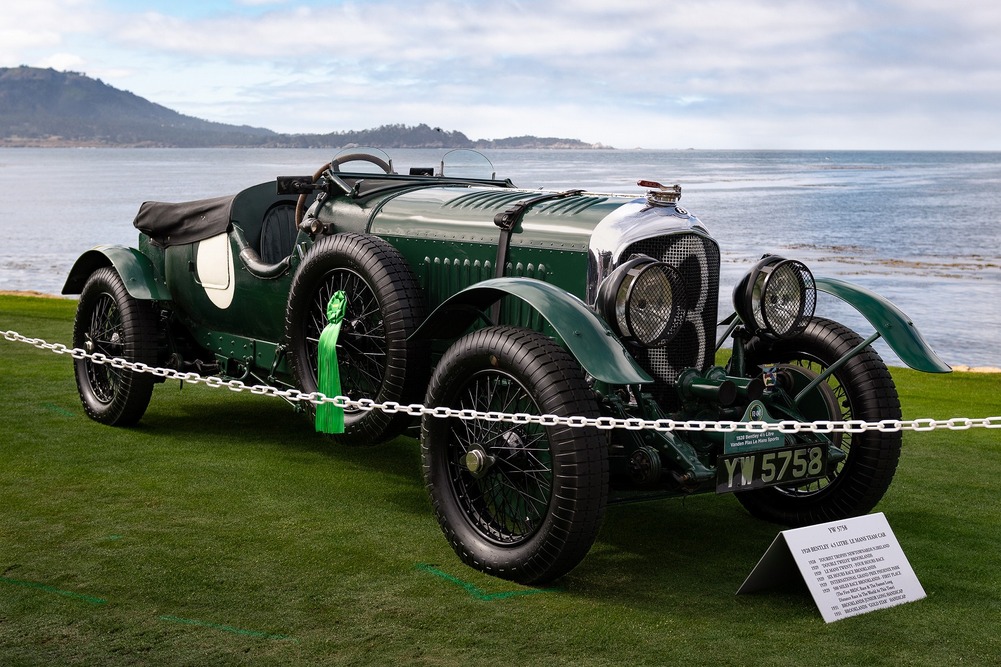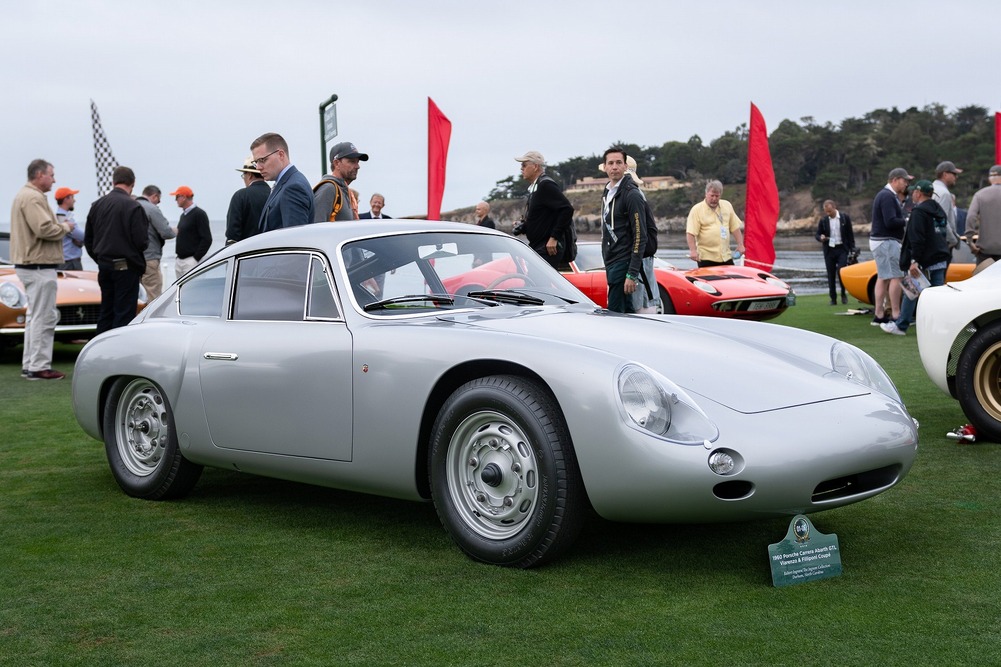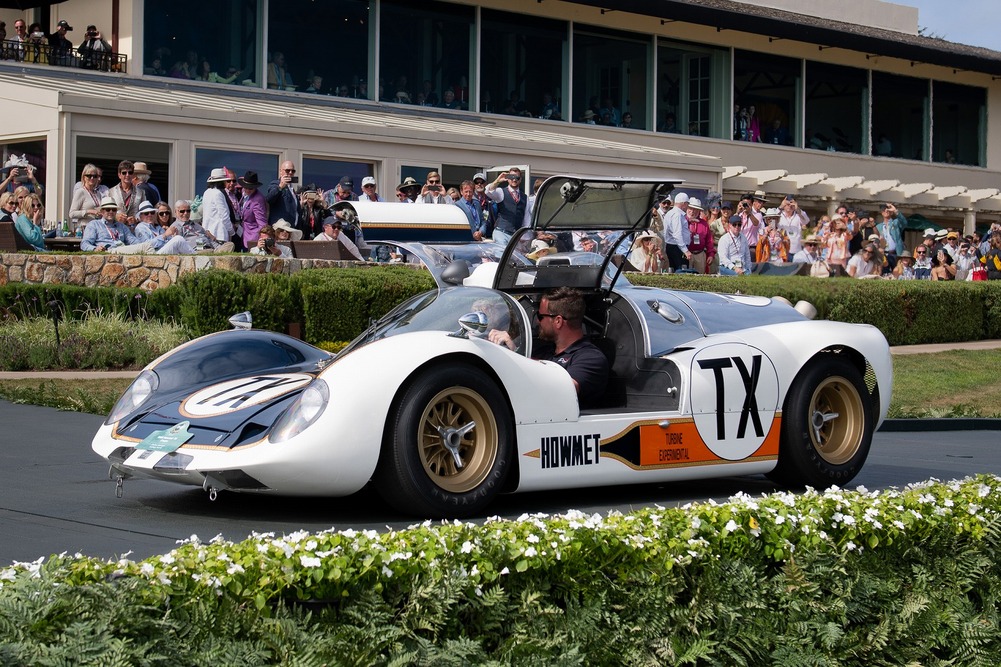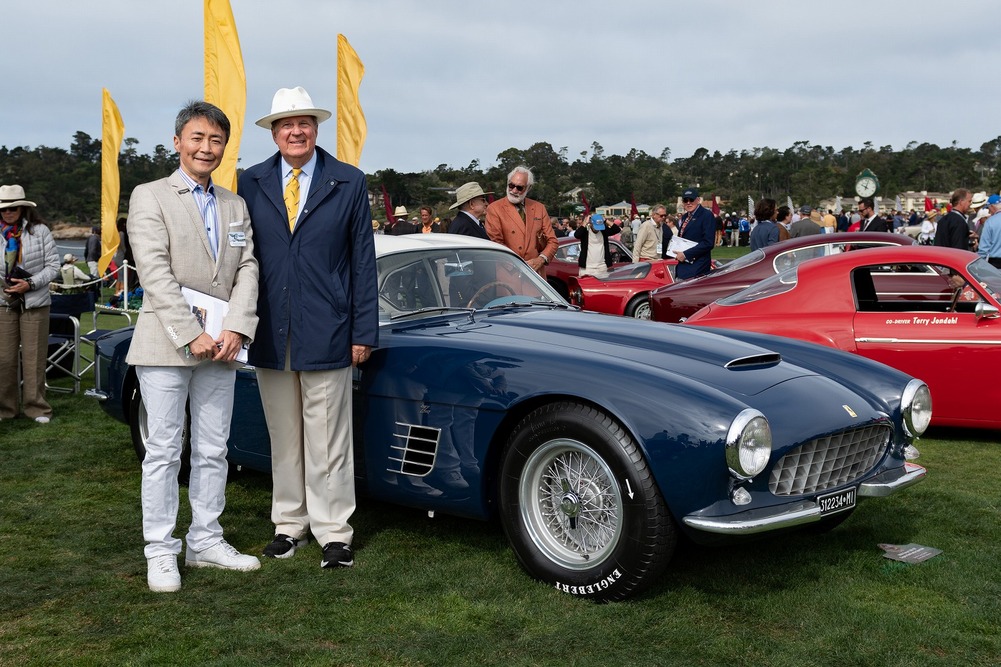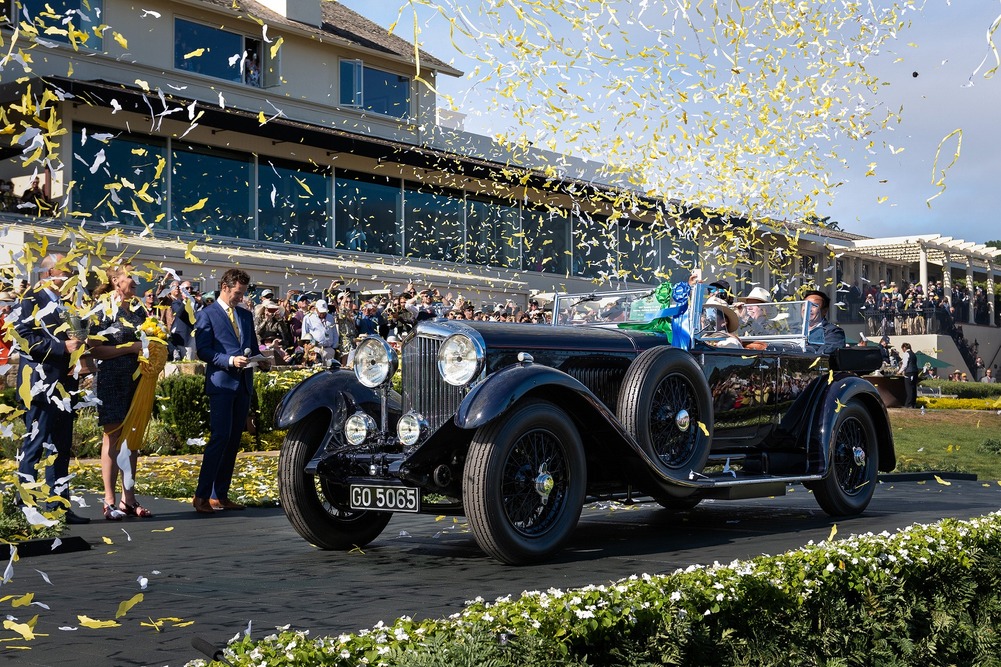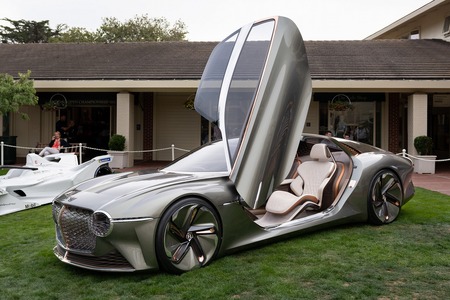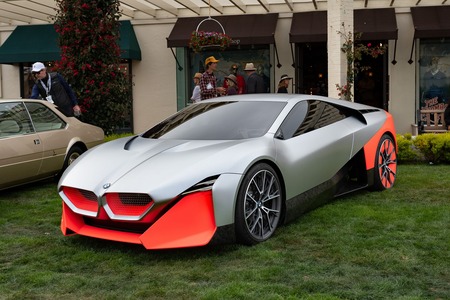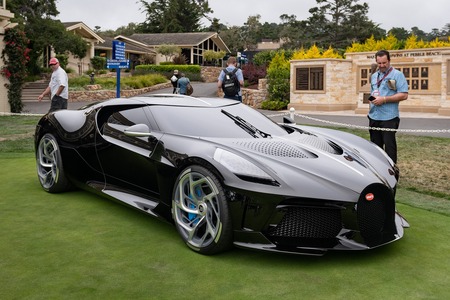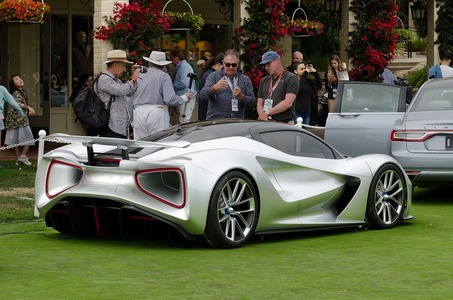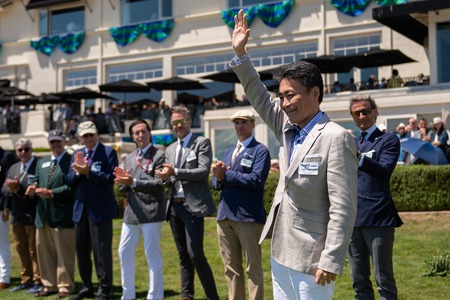An Automotive Masterpiece That Took the Circuit by Storm: The Alfa Romeo 8C2300 Wins the Gran Turismo Trophy 2019
On 26 August, at the 68th Pebble Beach Concour d’Elegance in the United States, ‘Gran Turismo’ Series Producer Kazunori Yamauchi awarded the ‘Gran Turismo Trophy’ to the 1931 Alfa Romeo 8C2300.
This car is a perfect example of Alfa Romeo designs of the 1930s. It was based on the 6C, which had already achieved a number of stunning victories in motor racing. Master engineer Vittorio Jano paired the 6C chassis with a 2.3L inline-eight engine, fitted with a lightweight aluminium head and converted to a dry sump, to which he added a Roots-type supercharger, completing this masterpiece of a machine. The 6C and 8C of the model designation refers to the number of cylinders, while the number after it represents the engine displacement.
The phenomenal speed of the 8C would lead to 4 consecutive victories at the 24 Hours of Le Mans between 1931 and 1934, as well as 3 consecutive victories in both the Targa Florio and the Mille Miglia. An estimated 188 units were produced over 4 years starting in 1931, with most of the bodies produced by either Touring or Zagato. The magnificent proportions of this automobile are exemplified by its combination of a long engine bonnet housing the 8-cylinder engine, a low-slung body and minimalistic fenders.
We would also like to introduce a few notable award winning cars as well as others nominated for this year’s Gran Turismo Trophy.
1941 Chrysler Thunderbolt
Before the outbreak of the Second World War, the automobile was an object of much desire for the American people. Each manufacturer would present their ‘dream cars’, which would now be known as 'concept models', further fostering such dreams of automobile ownership.
The Thunderbolt is one such dream car. It was designed by futurist Alex Tremulis, who would later go on to produce the famous Tucker sedan. While it lacked the prominent fenders and radiator grill that characterised Chryslers before it, the Thunderbolt featured numerous technological innovations including a power retractable hardtop, retractable lamps and power windows.
1928 Bentley 4.5L
When talking about Bentleys, it is impossible not to mention the 24 Hours of Le Mans. Having begun competition at Le Mans at the inaugural race of 1923, they would also go on to win 4 times consecutively from 1927 to 1930.
The 4.5L is one of these winning cars, taking victory in 1928. This car is notable for its large capacity engine which was selected to compensate for its boxy and heavy body. The 4398cc SOHC 4-valve inline-four engine produced 110 horsepower. Between 1927 and 1931, as many as 665 such cars were built. Its standard Vanden Plas body adorned with British Racing Green paint makes for an exceptionally attractive Bentley.
1960 Porsche Carrera GTL
Based on the 356, already one of the most prominent sports cars of its time, the Carrera was a special model modified for use in racing. While only 60 units were produced, 20 of these were passed over to tuning specialist Carlo Abarth in Turin, where they were further modified to reduce weight. This resulted in the Carrera GTL.
The body was designed by stylist Franco Scaglione, well known for his streamlined aerodynamic designs. These cars would go on to compete in the 24 Hours of Le Mans from 1960 to 1962, where they claimed 3 consecutive victories in the 1600cc class. This particular vehicle was first delivered to Sweden at the time of sale, and retains a high level of originality as well as boasting low mileage.
1968 Howmet TX
During the 1950s there was much interest in the possible replacement of future reciprocating engines with gas turbine engines. Renault, Fiat, Rover and Chrysler, as with many other organisations, conducted testing with such machines. This Hormet TX is a rare example of gas turbine technology implemented in a race car.
The instigator of this project was race driver Ray Heppenstall, who proposed equipping a McKee Engineering space frame with 2 Continental Aviation helicopter turbine engines. The car failed to complete the 1968 24-hour endurance races at Daytona, Sebring and Le Mans, though it was able to produce a number of favourable results in sprint racing.
1956 Ferrari 250GT
Since leaving Alfa Romeo, Enzo Ferrari had always held a preference for 12-cylinder engines. This dream would be fulfilled by the Ferrari-Colombo V12, designed by engineer Gioacchino Colombo, who had left Alfa Romeo to work with Ferrari. One such car to use this engine was the 250 series.
First produced in 1956, most models of the 250GT were constructed by Scaglietti based on the Pinin Farina body design. However, Zagato also produced a limited run of 5 cars aimed at customers looking for a more radical design. This particular car is the first such vehicle produced and features a two-tone dark blue metallic and white colour scheme that sets it aside from the rest of the Ferrari lineup.
The Gran Turismo Trophy winning Alfa Romeo 8C2300 is planned to be added to Gran Turismo in the future. This year’s Pebble Beach Concours d’Elegance Best of Show was awarded to the 1931 Bentley 8 Litre Gurney Nutting Sports Tourer.
(Descriptions provided by Hideo Kodama)

